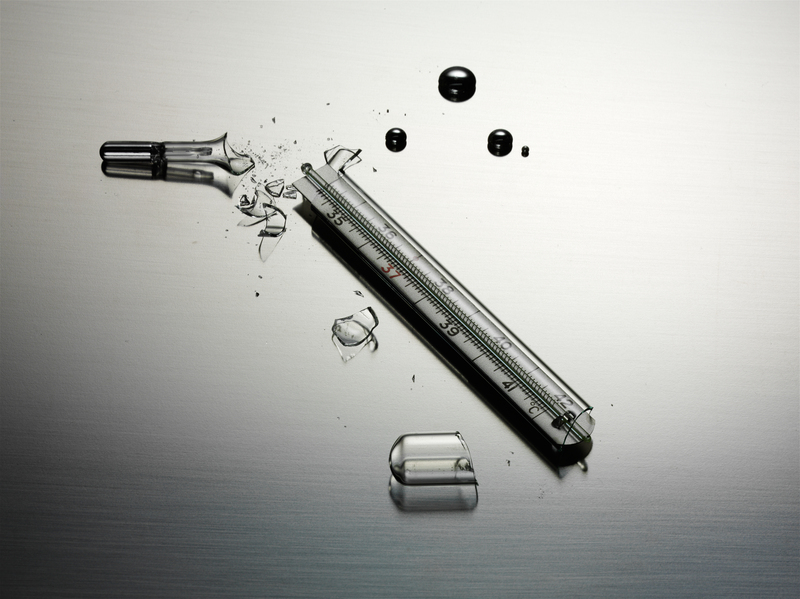Practical Tips for Plant Pot Disposal
Disposing of old plant pots might seem simple, but with environmental concerns on the rise, it's essential to follow eco-friendly and responsible methods. Plant pot disposal isn't just about tossing pots in the trash; it's about minimizing waste, recycling where possible, and finding smart ways to give your pots a second life. In this comprehensive guide, we'll reveal practical tips for disposing of plant pots--whether plastic, ceramic, clay, or biodegradable.

Why Responsible Plant Pot Disposal Matters
While tossing pots into the garbage may seem harmless, the cumulative environmental impact is significant. Most plant pots, especially plastic ones, take hundreds of years to break down in landfills. In fact, millions of plant containers end up in landfill each year, further straining the ecosystem.
- Plastic plant pots are particularly problematic due to their slow decomposition rates and the chemicals they may release.
- Ceramic and clay pots, although natural, don't decompose quickly and can cause injuries if broken and left in nature.
By following sustainable disposal techniques, you not only help the environment but also contribute to a circular economy by extending the life of these items. Below, you'll find actionable advice for all types of plant containers.
How to Dispose of Plastic Plant Pots
Plastic plant pots are the most commonly used, and often the trickiest to dispose of properly due to recycling limitations. Here's a breakdown on how you can dispose of plastic pots responsibly:
1. Check Local Recycling Options
- Contact Your Local Recycling Center: Not all plastic pots are recyclable through curbside programs because of their shape or material. Many centers accept plastic containers with Resin Identification Codes #2 or #5.
- Nursery and Garden Center Drop-Off: Many garden centers and nurseries host plant pot recycling programs, typically accepting clean, size-specific pots for recycling.
2. Clean the Pots Thoroughly
Recycling facilities often reject dirty or contaminated items. Wash pots before recycling: remove stickers, soil, and labels. This increases the chances your plastics will be accepted and properly processed.
3. Reuse Whenever Possible
- Repurposing: Use old pots for starting seedlings, crafts, or storage. Consider painting them for use as decorative containers or DIY plant markers.
- Share with Others: Offer surplus pots on community boards, social media, or local gardening groups. Many gardeners appreciate secondhand containers.
4. Avoid Burning or Landfills
Never burn plastic pots--they release toxic fumes harmful to you and the environment. Use landfill as the very last resort only when recycling or reusing isn't possible.
Disposing of Clay and Ceramic Plant Pots
Unlike plastic, clay and ceramic pots are more durable, but disposing of them presents its own challenges. Here's how you can handle ceramic and terra cotta pots in an environmentally responsible way:
1. Repurpose or Donate
- Home or Garden Use: Broken pieces can be used as drainage crocks in the bottom of other pots, for mulching, or as paths in your garden. Larger, intact pots work well as organizers or rustic decor.
- Donations: Offer usable pots to local schools, community gardens, or thrift shops.
2. Recycle Masonry and Ceramics
- Construction Recycling Facilities: Some areas accept ceramics and terra cotta as part of masonry or construction waste for recycling as aggregate or fill material.
- Check Municipal Guidelines: Always check with your town's waste management department for local rules regarding disposal of ceramics.
3. Creative Uses for Broken Pottery
- Mosaic Art Projects: Use fragments in mosaics, garden edging, or planters.
- Garden Bed Decoration: Pieces can help create unique landscape elements or fairy gardens.
Eco-Friendly Disposal of Biodegradable and Eco Pots
Plant pots made from natural materials like coir, peat, paper, bamboo, or biodegradable composites are increasingly popular for their reduced environmental impact. Here's how to dispose of these environmentally friendly pots:
1. Composting
- Home Compost: Most biodegradable pots can be cut up and added to your compost pile, where they break down naturally over time.
- Community Composting: If you lack a home system, check city compost drop-off programs.
2. Direct Planting
One of the key benefits of biodegradable pots is that they can go directly into the ground with the plant, enriching the soil as they decompose. Always remove non-compostable parts like synthetic labels.
3. Landfill as a Last Resort
While these materials break down faster than plastic, they still add unnecessary waste when thrown into landfills. Always try composting or reusing first.
General Tips for Safe and Efficient Plant Pot Disposal
- Sort by Material: Group pots by type before disposal. This simplifies recycling or donation processes and ensures correct handling.
- Check for Recycling Symbols: Many plastic pots have a recycling logo with a number; this indicates what kind of plastic was used and whether it's widely accepted for recycling.
- Store Responsibly: Keep pots indoors or covered until disposal to prevent them from becoming breeding grounds for mosquitoes or other pests.
- Remove Non-Biodegradable Attachments: Take off plastic labels, wire handles, or stakes before composting pots.
Creative Ways to Reuse and Upcycle Old Pots
If you're looking for alternatives to plant pot disposal, try turning those old containers into something new. Here are a few fun and creative ideas:
- Storage Solutions: Small pots can hold office supplies, workshop nails, or children's craft tools.
- Craft Projects: Paint and decorate old pots for use as candle holders, desk organizers, or festive decorations.
- Outdoor Utility: Turn large containers into bird baths, feeders, or even small composters.
- Community Giveaways: List pots for free on community sharing platforms like Freecycle, Facebook Marketplace, or neighborhood groups.
How Garden Centers and Retailers Handle Pot Recycling
Many nurseries and large retailers now run take-back or recycling initiatives for plant pots. Here's how these programs usually work:
1. Collecting Used Pots
- Customers can drop off cleaned plastic pots at designated collection points within the store.
- Staff sort and prepare pots for transport to recycling facilities or for sterilizing and reusing in the nursery.
2. Retailer-Led Innovations
- Some companies are switching to recyclable types of plastic, using more sustainable packaging, or implementing deposit return systems for plant pots.
- Ask your retailer if they have a plant pot return program, and support businesses with green initiatives.
Frequently Asked Questions About Plant Pot Disposal
- Can I put plant pots in my curbside recycling? This depends on your local recycling policies. Call your waste authority to determine if your plastic types are accepted.
- Are black plastic pots recyclable? Black plastics are often not detected by sorting machines, making them tricky to recycle. Look for specialized programs that accept them.
- Can I use broken clay pots for anything? Yes! Use as drainage material in other pots, garden edging, or for crafty projects.
- What happens if I compost biodegradable pots with plastic labels? The non-compostable label may remain in your compost, contaminating it. Always remove synthetics first.

Making Eco-Friendly Choices in the Future
While plant pot disposal is important, reducing the need for disposal starts with smart shopping. Consider buying plants in biodegradable pots or requesting alternatives to black plastic. Support garden retailers who accept old pots back or those using recycled and recyclable materials.
- Choose Sustainable Materials: Favor coir, bamboo, or paper pots.
- Participate In Take-Back Programs: Encourage your local garden center to offer a recycling bin for used pots.
- Educate Fellow Gardeners: Share information about responsible plant pot disposal and recycling options to amplify the impact.
Conclusion: The Importance of Thoughtful Plant Pot Disposal
Disposing of plant pots thoughtfully and sustainably will help reduce landfill waste and lessen your environmental footprint. Whether recycling, reusing, donating, or composting, you have several practical options to handle old plant pots responsibly. Take a moment to explore your local recycling resources, get creative with upcycling, or offer your pots to fellow gardeners. Every small effort makes a difference towards a greener planet!
Use these practical tips for plant pot disposal and become a more environmentally savvy plant enthusiast--turning waste into valuable resources, one pot at a time.